
Attention gallant officers of the Union and the Confederacy, the American Civil War Mod: Revived version 1.5 is ready for a full public release! This new version includes many great new additions, such as new weapons, new uniforms, new units, new sounds, new animations, voice commands, and much much more. Continue reading below for an in depth dive into the main features, and a full changelog. A great deal of thanks is due to Matsuri5, a new member of the development team, for his dedicated and tireless assistance with overhauling the map and making some very good uniforms and hats for the mod, Helm8000 for his outstanding work on the new weapons and his help in changing the starting year, Эльдар for telling me how to make a new mouse cursor and giving me lots of valuable information about modding, pizzaman6 and UwU_XD for providing help and educational materials, the Blood and Iron team for their osp's, Tasmit for his sound effects, and all the wonderful members of the community who have been reporting bugs, giving suggestions, and providing support for the mod in every way; none of this would be possible without you all and the hard work you put in to help with this mod's development. Together we have made a great achievement, and I am sure I can speak for everyone when I say we are all proud to present to the public our combined work so far. There is more to come in the future, but so much work has been done already, the mod deserves to be released as is. Development will continue and the mod will only further be polished and updated as time goes on.
Several players have reported experiencing crashes with the mod, and it seems to be caused by a few incorrect entries in the module.ini. The mod didn't crash on my PC during testing, however it seems to be causing problems for other people. This issue has been successfully resolved and there is now a hotfix available that you can download from the link below. Please follow the instructions provided.
Update!
I learned how to get soldiers to reload while walking, and it is extremely easy and causes no issues. Here is how to add it your copy of the mod:
1. Open the module.ini for the civil war mod
2. Go all the way to bottom and copy and paste this under the last line: can_reload_while_moving = 1
3. Save and exit. That's it!
This will be included in all future releases of the mod. Enjoy!
Main New Features:
New Units
Wheat's Louisiana Tiger Rifles
"Louisiana Tigers" was the common nickname for certain infantry troops from the State of Louisiana in the Confederate Army. The origin of the term came from the "Tiger Rifles," a volunteer company raised in the New Orleans area as part of Major Chatham Roberdeau Wheat's 1st Special Battalion, Louisiana Volunteer Infantry (2nd Louisiana Battalion). The nickname eventually expanded to apply from the original company to a battalion, then to a brigade, and eventually to all Louisiana troops within the Army of Northern Virginia. Although the exact composition of the Louisiana Tigers changed as the war progressed, they developed a reputation as fearless, hard-fighting shock troops.
In game, the Tiger Rifles are equipped with Mississippi Rifles for effective long range shooting, and can fight well in melee with their bayonets. They wear brown and blue zouave coats, some have blanket rolls, stripped baggy pants, and either a fez with blue tassels, grey kepi's, or black/brown hats.
10th Louisiana "Lee's Foreign Legion"
The 10th Louisiana was known as "Lee's Foreign Legion" because it was so ethnically diverse, consisting of men from 21 different nationalities. Louisiana units - especially those recruited in New Orleans - tended to be very cosmopolitan, but the Tenth was perhaps one of the most.
According to Lee's Tigers Revisited by Terry L. Jones, p. 404, "The regiment was composed of men from 21 nations (only three of the companies were predominantly Anglo-American), and most were laborers, farmers, and sailors. Of those giving a place of birth, 170 were born in Louisiana; 71 in states outside Louisiana; 249 in Ireland; 84 in the Germanic states; 44 in France; 26 in Italy; 24 in England; 20 in Spain; 9 in Canada; 7 each in Austria, Greece, and Mexico; 5 in Gibraltar; 4 in Portugal; 3 in Sicily; 2 in Norway; and 1 each in Corsica, Cuba, Martinique, Russia, Sardinia, and Switzerland."
The 10th Louisiana fought in many engagements with the Army of Northern Virginia, from the Battle of Williamsburg to the Battle of Cold Harbor. At the Battle of Gettysburg in July 1863, the regiment was part of the brigade of Colonel Jesse Williams and participated in a series of unsuccessful attacks on the Union entrenchments at Culp's Hill. There the regiment lost more than forty-five percent of the 226 men engaged. On April 9, 1865, only 4 officers and 13 men were left to surrender after the Battle of Appomattox Court House.
In game, the 10th LA are equipped with various rifles, including some captured Union Springfields, as was common among many Confederate units historically. They are better with their rifles and bayonets compared to standard infantry, and are a strong force to hold the line. They wear brown and blue zouave coats, striped baggy pants, some have blanket rolls, and they all wear red fezzes with red tassels.
Hood's Texas Brigade
Hood's Texas Brigade was an infantry unit that, along with the Stonewall Brigade, were distinguished among the Confederate Army and considered it's shock troops. They fought in every major battle of the Eastern Theater except for Chancellorsville. The brigade distinguished itself during the Seven Days Battle where it routed Union troops at Gaines' Mill, captured a battery of guns, and repulsed a cavalry counterattack. Casualties at Gaines Mill were severe, amounting to at least 25% of the Texas Brigade's total strength.
Its reputation increased when it spearheaded Longstreet's assault on Pope's left at the battle of Second Manassas. The brigade overran two Union regiments, nearly annihilated the 5th New York Zouaves, and captured a battery of guns, losing 628 men in the battle. Its reputation for fighting was sealed at the Battle of Antietam (Sharpsburg), when it closed a gap in the Confederate line and drove back the two Union Corps that were attacking. Out of 854 that went into battle at Antietam, 550 of the Texas Brigade were killed or wounded.
The brigade's most famous action took place on the second day of the Battle of Gettysburg, during its fight for Devil's Den. Though the Confederacy ultimately lost that battle, the 1st, 4th, and 5th Texas, as well as the 3rd Arkansas distinguished themselves in taking Devil's Den, despite being greatly outnumbered and suffering heavy casualties, including their commander, General Jerome B. Robertson, who was wounded in the fighting. The brigade's failure to take Little Round Top marked the failure of that day's fighting.
By the war's end, of the estimated 5,353 men who enlisted in the three Texas and one Arkansas regiments that made up the Texas Brigade, only 617 remained to surrender on April 9, 1865, at Appomattox Court House.
In game, Hood's Texans are equipped with a variety of rifles, like most Confederate units, and some will wear a tan kepi with an insignia unique to the regiment: a star on the top of the kepi with "Texas" spelled out with each letter on the end of each point of the star. The men of the Texas Brigade are hard fighters and make up for their lack of a standard modern rifle, with being strong in melee and good shooters.
The Stonewall Brigade
The Stonewall Brigade was one of the most famous infantry units in United States Military history. It was trained and first led by General Thomas J. "Stonewall" Jackson, whose severe training program and strict standards of military discipline turned enthusiastic, raw recruits into an effective military organization, which distinguished itself from the First Battle of Bull Run (First Manassas) in 1861, to Spotsylvania Court House in 1864.
Jackson's brigade was referred to informally as "Virginia's First Brigade" until their fight at First Manassas, where both the brigade and its general received the nickname "Stonewall". General Barnard E. Bee of South Carolina is said to have made his immortal remark as he rallied his brigade for the final phase of the battle. Although the exact words were not recorded at the time, it is thought he probably said, "There stands Jackson like a stone wall. Rally behind the Virginians!" This is considered the turning point of the first major battle of the war; Union troops were repulsed and sent reeling back toward Washington D.C. in defeat.
At Spotsylvania Court House, the brigade was on the left flank of the "Mule Shoe" salient, in the part of the line known as the "Bloody Angle", where Winfield S. Hancock's II Corps launched a massive assault. All but 200 men of the Stonewall Brigade were killed, wounded, or were among the 6,000 captured following the bloody hand-to-hand fighting. The Stonewall Brigade was officially dissolved after Spotsylvania and consolidated into a single regiment.
The remaining regiment fought as part of Brigadier General William Terry's brigade (which itself was the remnant of the Stonewall Division) in the Valley Campaigns of 1864 under Jubal A. Early. Early's army was eventually defeated in the Valley by Philip Sheridan and they rejoined Robert E. Lee and the Army of Northern Virginia for the Siege of Petersburg and the Appomattox Campaign. Of the 6,000 men who served in the Stonewall brigade during the war, by the time of the surrender at Appomattox Court House, only 219 soldiers were left, none above the rank of captain.
In game, the Stonewall Brigade are equipped with various rifles, but some soldiers still use smoothbore muskets and lower quality rifles, making accurate long range fire unreliable. The Stonewall Brigade perform best as shock troops, much like their historical counterparts, getting in close for powerful volleys and breaking the enemy lines with furious bayonet charges. Their uniforms are the same as standard Confederate soldiers, but like all the infantry units in the mod, they will have their own unique flag bearers that will enable the player to distinguish them as an individual unit.
Berdan's Sharpshooters
The 1st United States Sharpshooters were an infantry regiment whose role was to kill enemy targets of importance from long range, such as officers and NCO's. The first regiment of volunteers began service in late November 1861. During their service, they fought in every Eastern battle up until the autumn of 1864. During their tour, the Sharpshooters were noted for efficient service in the battles of Yorktown, Gettysburg, Vicksburg, Chattanooga, Atlanta, Spotsylvania and Petersburg.
Hiram C. Berdan of New York State founded the Sharpshooters. The volunteer recruits had to pass a marksmanship test in order to qualify to be a member of the Sharpshooters; each man had to be able to place ten shots in a circle of 10 inches (250 mm) in diameter from 200 yards (180 m) away. They were able to choose a rifle and position of their preference for the test. A man eligible to be a Sharpshooter had to possess a keen eye, steady hands and a great deal of training and skill with a rifle. In addition to that, for a man to be a Sharpshooter, it took cool nerves in order to be able to estimate their target carefully, determine the high trajectory needed, and to take in consideration the effect that any current wind may have on the bullet as it flies through the air.
At first, many of the Sharpshooters used the Whitworth Rifle, sporting arms, and various other custom-made privately owned target weapons, but this began leading to problems when it came to ammunition supply, and as a result, Berdan made a request to receive Sharps rifles to issue to his men. Berdan chose the Sharps rifle mainly because of its fast breech loading and outstanding accuracy from long-range distances. Unfortunately, Lieutenant General Winfield Scott denied Berdan's request because he feared the issuance of Sharps rifles would lead to a waste of ammunition, but after President Abraham Lincoln watched Berdan perform a demonstration of the Sharps rifle's extreme speed and accuracy, he was so impressed that he ordered them to be immediately issued to both Sharpshooter regiments. The sharpshooters were finally issued their Sharps rifles on May 8, 1862.
The most notable aspect of the Berdan Sharpshooter uniform is the green color, rather than the standard Union blue. They were one of only a few regiments that went outside the typical Potomac Army's uniform. The green uniform gave the sharpshooters the clear advantage of camouflage, but also sometimes was a disadvantage because they were easy to distinguish against the rest of the Union soldiers for Confederate marksmen to spot and target. Sharpshooters were high priority kills amongst the Confederate army, because they had such high skills and good salvageable equipment.
By the end of the war, ten of the regiment's officers and 143 enlisted men were killed in action or mortally wounded and 1 officer and 128 enlisted men died of disease, for a total of 282 casualties. Lieutenant Colonel William Y. W. Ripley was wounded and later received the Medal of Honor for his heroism as second in command of the 1st U.S. Sharpshooters at the Battle of Malvern Hill.
In game, the Berdan's Sharpshooters are equipped with Sharps Rifles and are deadly accurate riflemen, the most elite the Union has to offer. They are very vulnerable in melee, but excel at long distance shooting, and are able to reload faster than any unit equipped with muzzle loading rifles. They wear green uniforms and kepis, and some of those kepis also bear their unit insignia.
5th New York Volunteer Infantry "Duryee's Zouaves"
The 5th New York Volunteer Infantry, also known as "Duryee's Zouaves", was an infantry regiment in the Union army led by Colonel Abram Duryee. The uniforms of the 5th New York were modeled closely on those of French Zouaves. General George B. McClellan said that, upon seeing the colorful New York regiment, "the Fifth is the best disciplined and soldierly regiment in the Army."
In August 1862, the regiment fell under the control of General John Pope. At the Second Battle of Bull Run (also known as the Second Battle of Manassas), the 5th New York Volunteer Infantry regiment was forced to withstand the advancing forces of General James Longstreet. In underestimating the size of the Confederate army, Pope ordered the regiment to support Hazlett’s Artillery Battery. Longstreet’s soldiers easily outnumbered the small regiment, and the Texas Brigade quickly inflicted over 330 casualties in the regiment. One hundred twenty Zouaves were killed within eight minutes, the greatest single battle fatality of all Federal volunteer infantry regiments in the entire Civil War. The entire Color Guard was killed, except for one man. The only officer to survive the battle was Captain Clevland Winslow.
On December 15, the unit fought at the Battle of Fredericksburg, covering the Union retreat. At the Battle of Chancellorsville under Joseph Hooker, the unit saw combat for the last time. Colonel Cleveland Winslow organized the 5th New York Veteran Volunteer Infantry after the original 5th mustered out. After a long and difficult recruiting period, the 5th Veterans joined the V Corps and fought in the final campaigns of the Virginia front.
In game, Duryee's Zouaves are an elite tier zouave unit, that is unlocked at the end of the upgrade tree for the Union army's generic zouave units. They are equipped with Springfield 1861 and Springfield 1863 Rifle Muskets, and are an effective frontline infantry unit, good both in melee and at range.
Wilder's Lightning Brigade
The Lightning Brigade, made up of the 92nd, 98th and 123rd Illinois, as well as the 17th and 72nd Indiana, was one of the most effective fighting units in the American Civil War, and their audacious and overwhelming early victories sparked the creation of a brand new type of military unit: the mounted infantry.
In early 1863, Wilder’s infantry brigade spent several frustrating months trying vainly to stop Confederate General John Hunt Morgan's raids on the Union supply lines. Frustrated both with the enemy and his commanding officers, Wilder asked for, and received permission, to mount his infantry. However, the army still had precious few horses, so attempting a short cut, Wilder procured nearly 1,000 mules from the supply trains and tried to saddle break them. The would-be troopers were nearly always bucked off in short order, much to the amusement of the men from other units who would gather to watch. Undaunted, Wilder ordered his men to sweep the Southern pastures and plantations for horses, and were soon properly mounted.
Wilder also decided the standard issue muzzle loading rifle musket was impossible to use on horseback and set out to find the best weapons available. Many cavalry troopers used breechloading carbines, but Wilder didn’t like them because their long range accuracy was poor. Bypassing Army red tape, Wilder had asked his men to vote on purchasing Spencer repeating rifles and they agreed unanimously. He obtained a loan from his hometown bank and each man of the brigade co-signed a personal loan of $35 ($713 in 2019) for his rifle. Embarrassed, the Federal government paid for the weapons before the men expended any of their personal money.
In late June, Colonel John T. Wilder’s Brigade got their baptism of fire when General William Rosecrans decided to use Wilder’s brigade to spearhead the Tullahoma Campaign in Middle Tennessee. On June 24th, the Lightning Brigade seized and held Hoover's Gap. Despite orders from General Joseph J. Reynolds to fall back, Wilder decided to hold his position, defeating repeated attempts to dislodge his force until reinforcements arrived, winning the most significant battle in the Tullahoma Campaign.
Three months later, The Lightning Brigade performed brilliantly again, this time during the Battle of Chickamauga. Just before the start of the battle, Wilder's brigade played a crucial role at Alexander's Bridge on September 18th, 1863, defending the crossing of West Chickamauga Creek and helping to prevent the Confederates from flanking the Union army. On September 20th, the second day of the battle, Wilder's brigade with its superior firepower was one of the few units that was not immediately routed by the Confederate onslaught against the Union right flank. Advancing from its reserve position, the brigade launched a strong counterattack, driving the Confederates around and through what became known as "Bloody Pond". Major General George H. Thomas formally commended Colonel Wilder for his performance at Chickamauga.
Wilder did not directly participate in the main battles for Chattanooga in November, but he led the brigade during much of the Atlanta Campaign in the spring and summer of 1864. Throughout much of 1863 and 1864, Wilder suffered from bouts of dysentery brought on by a case of typhoid fever in 1862. For health reasons, he resigned from the Army in October 1864 and returned home.
In game, Wilder's Lightning Brigade is an elite mounted infantry unit, equipped with Spencer repeating rifles, and long handled hatchets instead of cavalry sabers. They cannot use their rifles from horseback, and are most effectively used to reach distant areas of the battlefield quickly, dismount, and use their repeating rifles to pour rapid fire into the enemy's lines.
76th Pennsylvania Volunteer Infantry "Keystone Zouaves"
In August, 1861, an order was issued by the Secretary of War, for the raising of a regiment of volunteers, which resulted in the formation of the 76th Pennsylvania Volunteer Infantry, known as the Keystone Zouaves. It rendezvoused at Camp Cameron, Harrisburg and on the 18th of November, the regiment received its colors from the hands of the Governor, and on the following day proceeded to Fort Monroe. After a week's encampment near the Fortress, it set sail for Hilton Head, South Carolina, arriving on the evening of the 8th of December. The regiment was here armed and equipped, and its drill and discipline commenced.
On July 6th, 1863, the 76th moved with Strong's Brigade, across Stono Inlet to Morris Island, in preparation for the attack on Fort Wagner. On the morning of the 11th, at five o'clock, four companies of the 7th Connecticut, and the 76th charged Fort Wagner in gallant style, led by General Strong himself, but were compelled to retire before a withering fire. The loss to the regiment was 187 killed and wounded, of whom 53 were killed.
On the 27th of May, 1864, the Eighteenth Corps and the Second Division of the Tenth Corps, to which the 76th was attached, were detached from the Army of the James, and moving, by transports, to White House, took position on the right of Grant's lines, at Cold Harbor. The division attacked at 4 P. M. on the 1st of June, and the battle raged furiously, at intervals, until the 3rd, with varying success. Four companies of the 76th, under Captain Littell, were ordered to the support of a battery which was posted in advance of the charging column. The loss in this three day's encounter was heavy.
On the 14th the division rejoined the Army of the James, and on the 16th moved on a reconnaissance mission on the Richmond and Petersburg Railroad, destroying the road and the enemy's works. It proceeded on the 23rd to Petersburg, performing picket duty on the front line of the works. During the siege, casualties occurred almost daily. On the 28th of September, the 76th moved with the corps, to Deep Bottom, and participated in the sanguinary engagement at Chapin's Farm, resulting in the capture of Fort Harrison. The loss to the regiment in this attack was severe.
On the 6th of January, 1865, a new expedition to accomplish the reduction of Fort Fisher started from Fort Monroe, under the command of General Alfred H. Terry. On the 13th, the troops debarked about five miles above Fort Fisher, and gradually approached the works. On the 15th the assault was made. The ironclads had kept up a continual bombardment, driving the Confederates from their batteries and into their bomb proof shelters. The bombardment had largely engrossed the attention and efforts of the besieged; thus enabling Curtis' Brigade, leading Terry's column, followed by Pennypacker's, to which was attached the 76th, and then by Bell's having already gained a partial shelter, at the price of moderate losses, about 475 yards from the fort, to spring forward under a heavy enfilading fire, over marshy and difficult ground, to and through the palisades. When Pennypacker, advancing to Curtis' support, overlapped his right, he drove the enemy from the heavy palisades that extended from the west end of the land face to the river, taking some prisoners; and now the two brigades, uniting, drove the Confederates, by desperate fighting, from about one-quarter of the land face.
The defense was obstinately maintained, and the assault was obstinately persisted in; but the Confederate garrison having lost its leader, General Whiting, who had fallen in the battle mortally wounded, and having been driven from traverse to traverse, was finally compelled to surrender. The loss to the Keystone Zouaves was very severe. The flag, carried by Sergeant Albert Sanders, was twice shot from the staff, and completely riddled. At the close of the action it contained more than eighty holes, made by rifle balls and fragments of shell.
Moving on Wilmington, which fell an easy conquest to the advancing Union forces, the army proceeded to Raleigh, where the regiment was detached for provost guard duty, and was stationed there until July 18th, when it was mustered out. On the passage home, one of the transports was wrecked upon the North Carolina coast, and several of the men were lost in the accident. The regiment reached Harrisburg on the morning of the 23rd, where it was paid and finally disbanded.
In game, the Keystone Zouaves are equipped with Springfield 1861 and 1863 rifle muskets and can form an effective battle line, as well as perform skirmish duty. They are above average melee fighters compared to standard infantry units, and are relatively on par with other elite infantry units.
20th Maine Volunteer Infantry Regiment
The 20th Maine Volunteer Infantry Regiment was most famous for its defense of Little Round Top at the Battle of Gettysburg. Prior to their notable actions in that battle in July 1863, the regiment was held in reserve at Antietam in September 1862, and was among those forced to remain overnight within sight of the Confederate lines at Fredericksburg in December 1862, forcing the regiment's Lieutenant Colonel Joshua Chamberlain to shield himself with a dead man. The unit was unable to participate in the Battle of Chancellorsville in April - May 1863, due to a quarantine prompted by a tainted smallpox vaccine that had been issued to the unit's soldiers.
The most notable battle was the regiment's decisive role on July 2, 1863, in the Battle of Gettysburg, where it was stationed on Little Round Top hill at the extreme left of the Union line. When the regiment came under heavy attack from the Confederate 15th and 47th Alabama regiments, the 20th Maine ran low on ammunition after one and a half hours of continuous fighting; it responded to the sight of rebel infantry forming again for yet another push up the slope at them by instead suddenly charging downhill with fixed bayonets, surprising and scattering the Confederates, thus ending the attack on the hill and the attempt to flank the hill position. The 20th Maine and the adjacent 83rd Pennsylvania together captured many men from both Alabama regiments (including Lt. Col. Michael Bulger, commander of the 47th), as well as several other men of the 4th Alabama and 4th and 5th Texas regiments of the same division.
Later actions in which the regiment participated included Second Rappahannock Station, Mine Run, The Wilderness, Spotsylvania Court House, the Siege of Petersburg, Peeble's Farm, Lewis' Farm/Quaker Road, White Oak Road, Five Forks, and Appomattox Court House. The 20th Maine marched from Appomattox, Virginia, on May 2nd, reaching the national capital at Washington D.C., on May 12th, where the remaining original members were mustered out of service on June 4th, 1865, with the remainder of the regiment leaving the Federal service on July 16th.
In game, the 20th Maine are equipped with Pattern 1853 Enfield Rifle Muskets, and make for a strong infantry force, both at range and in melee. They also wear kepi's with their corps insignia on the top which help to distinguish them from standard infantry units.
69th Infantry New York State Volunteers "Irish Brigade"
The Irish Brigade was an infantry regiment in the Union army consisting predominantly of Irish Americans. The Irish Brigade was known in part for its famous war cry, "Faugh a Ballaugh", which is an anglicization of the Irish phrase, fág an bealach, meaning "clear the way". According to Fox's Regimental Losses, of all Union army brigades, only the 1st Vermont Brigade and the Iron Brigade suffered more combat dead than the Irish Brigade during the American Civil War.
At the First Battle of Bull Run (First Manassas), the regiment served under the command of Colonel William T. Sherman and was one of the few Union regiments to retain cohesion after the defeat, despite the wounding and capture of their commanding officer, Colonel Corcoran, by Confederate forces. The 69th served as the Army of the Potomac's rear guard during the disorganized retreat to the defenses of Washington D.C.
After Bull Run, Thomas Francis Meagher applied to have the 69th New York Volunteer Militia reorganized into Federal service as the core unit of a larger brigade composed predominantly of Irish immigrants. Meagher was promoted to brigadier general and designated the brigade's commander. The Irish Brigade distinguished itself from the rest of the Army of the Potomac by Meagher's insistence on arming the 8 line companies of each New York regiment with Springfield Model 1842 Smoothbore Muskets, an obsolete weapon that was largely phased out during 1862, because he wanted his men to be able to fire buck-and-ball shot (a .69 caliber musket ball with four smaller balls), which produced a shotgun effect in close-range combat and could not be used with rifles. The three original New York regiments carried Model 1842 muskets all through the Army of the Potomac's campaigns and battles in 1862–63, using buck-and-ball shot with deadly effect in the Wheatfield on July 2nd at Gettysburg.
Meagher assumed his brigade would perform most fighting at close range where smoothbores were effective, and his officers generally agreed. The majority of the soldiers continued to use their Model 1842 muskets through the Overland Campaign until the depleted outfit was temporarily broken up in June 1864. By 1864, officers had at last realized the power of rifles and firing was now typically being done from distances of up to 200 yards. There are relatively few complaints on record from the enlisted men about their outdated muskets, although one veteran recalled that "we were sometimes at a disadvantage because of the short range", and that he had to pick up a discarded rifle from the field at Antietam to deal with Confederate skirmishers.
The brigade suffered its most severe casualties in December 1862 at the Battle of Fredericksburg where its fighting force was reduced from over 1600 to 256. The brigade was involved in the northern battleground at Fredericksburg where they assaulted the sunken road in front of Marye's Heights. Coincidentally, one of the Confederate regiments manning the sunken road defenses was a predominantly Irish Regiment commanded by Brigadier General Thomas Reade Rootes Cobb. Knowing that Cobb's men manned the wall, and that both Cobb's and Meagher's units contained members of the Irish Republic Brotherhood, an organization dedicated to gaining military experience in the United States, then freeing Ireland from Britain after the war, Lee ordered reserves sent to the position. He need not have worried. Cobb's men helped devastate the Irish Brigade before the reinforcements Lee sent could settle into place. It was at Fredericksburg that Lee allegedly referred to Meagher's regiment as the "Fighting 69th".
After the Battle of Fredericksburg, General Meagher again requested to recruit the brigade back to strength. This time the request was denied. In May 1863, the brigade sustained further casualties at the Battle of Chancellorsville; Meagher repeated his request to recruit replacements, was denied, and resigned his commission in protest. While continuing to serve with distinction, casualties continued to increase and by June 1864 the Irish Brigade had been reduced to regimental size. The US Army disbanded it and incorporated the remaining elements of the brigade into the 3rd and 4th Brigades of the 1st Division, II Corps. A Second Irish Brigade was reformed from the old Irish Brigade regiments as well as the addition of the 7th New York Heavy Artillery, later replaced by the 4th New York Heavy Artillery in early 1865.
In game, the Irish Brigade is equipped like their historical counterparts, with Springfield Model 1842 Smoothbore Muskets, and have their corps insignia on their kepis to help distinguish them. The inaccuracy of their Smoothbore Muskets make them ineffective at long range, but they are a very potent fighting force in close range shooting and with their bayonets. They make for effective shock troops, good for getting close to the enemy for a devastating volley and then moving in for the charge.
Voice Commands (optional)
A very big and very impressive addition to the mod is the introduction of voice commands, thanks to the VoiceBot program. This software is free to use, although you can purchase a professional version that includes more features, but nothing that prevents you from using this program to it's full potential with this mod. Some things to keep in mind when using it, you should train your microphone to recognize your voice before trying to use the commands, so your computer is familiarized with what your voice sounds like and will understand you more reliably. You can find tutorials on how to do this on your specific computer very easily through your favorite search engine, it is a simple procedure.
The program relies on text-to-speech software, so when using the program, you should make sure you have as little background noise as possible so it does not interfere with the computer understanding you, and while a built in mic can work, a headset or separate microphone works better. The program will not always recognize your voice, so in battlefield emergencies, you can always use manual controls to take immediate action.
The orders in game are distinguished between cavalry and infantry orders, and there are correct bugle calls for both. This makes for a better soundscape when giving orders, so it gives a greater feeling of immersion to hear cavalry bugle calls when giving cavalry orders, and infantry bugle calls when giving infantry orders. Please familiarize yourself with the controls when you import the voicebot profile I have included, and if you wish to change anything, you can edit the orders within the voicebot program as well. Orders rely on quick, key phrases that are easier for the computer to understand than phrases that are longer and more complex. So if you do decide to change the words that activate the commands, remember that the words you choose shouldn't be too complicated.
So, here are all the steps you need to follow in order to get it all up and running:
- First, you will need to download and install a program called "VoiceBot" from here: Voicebot.net.
- After installing VoiceBot, you will need to import the voicebot profile that I included in the mod package. This can be done by going to the settings in the voicebot program and you will see a button for importing and exporting profiles. Extract the voicebot profile folder from the mod package onto the desktop or your wherever is your preferred destination, then click import in the voicebot program, find where you extracted the voicebot profile and import the profile inside of the folder. I have also included the sound files for the bugle calls, I'm not sure if the sounds will play in the program without them. The folder can simply be placed in your preferred destination for quick and easy reference.
- After the profile is imported, I strongly recommend you familiarize yourself with the commands, and if you prefer to use a different voice command to execute an order, you can change it to another word by editing the macro.
- You should also train your microphone to recognize your voice, if you haven't done so already, because VoiceBot relies on speech recognition software that is used for voice-to-text programs, so it may not always recognize your voice, especially if your computer has never heard your voice before.
- You can press the play button to make the program start to listen and press pause to make it stop. You can easily alt + tab in game to turn it off when you are not in combat or don't want to use it.
- For more detailed instructions on how to use the VoiceBot program, please refer to their website.
Oh, and there is a small, special feature I included as well. Once you get it all working, give your men the order to "yell like furies", preferably when playing as the Confederacy, and enjoy. You can also give the order, "let's give 'em hell", and something fun will happen. Try it out!
Some Advice for Playing the Mod:
- No matter how brave, well trained, well equipped, or elite your soldiers are, a bullet is a bullet and it will still kill a man the same as any other. Do not carelessly throw away the lives of your men, if you intend to win battles. With the addition of the new, horrific death screams, you will also be hearing the cries of pain from the men whose lives you sacrifice, so try to make sure those screams come from your enemies instead. If your men must give their lives, try to make it worth it for both you and them. If you don't feel very humane, remember it still costs money and takes time to recruit and train new soldiers.
- Be mindful of splitting your forces and moving units without support. The enemy can attack at any moment, especially if they sense an advantage or that they are in a bad position. Separated units can easily be cut off and surrounded by cavalry.
- Cavalry charges can be devastating for you and your men if you are unprepared. Always take into account the composition of the enemy's army, and respond accordingly. Use terrain to your advantage; high ground and dense woods will break the momentum of cavalry charges and make it easier for your men to pick off the riders. Remember, your men wear no armor, a solid cut from a cavalryman's saber will most likely be certain death. Keep the men close together, and when the enemy cavalry gets too close, switch to melee only so your men are not reloading while they are being attacked.
- As your men progress and gain experience, the weapons they are equipped with will change as well. Militia units start off with low quality rifles and smoothbore muskets. Confederate militia even use the Springfield 1816, a flintlock musket, in their desperation to arm all their soldiers. Confederate infantry soldiers use lower quality weapons for longer than Union infantry, but eventually are fully equipped with quality rifles, either those manufactured by the Confederacy, imported from abroad, or captured from the Union. Union soldiers have more standardized, quality equipment from early on, and have greater access to repeating and breech loading weaponry.
- Confederate mounted infantry start off at an advantage to their Union counterparts, being better horsemen and having access to better weapons. However, this advantage quickly changes as Union cavalrymen soon ditch their muzzle loaders for breech loading carbines. Confederate mounted infantry will eventually discard some of the lower quality equipment, but never have exclusively breech loading weapons, and have no access to repeaters. The best they have are Sharps Carbines that are only equipped at random by a handful of troopers.
- Breech loading carbines can be used on horseback, while muzzle loaders can not, giving experienced Union mounted infantry another advantage over their Confederate counterparts.
- Spencer repeating carbines are only given at random to battle hardened Union mounted infantry, due to the fact that they can fire 7 rounds before reloading, compared to all the other breach loaders that fire one. Too many Spencers would be too unbalanced against the Confederacy, and historically, the Spencer was only used later into the war and it was, I believe the fourth most popular, behind the Sharps, Smith, and Burnside Carbines.
- Union sharpshooters are equipped with Sharps rifles at random, as well as the best rifle muskets available, making them a formidable ranged unit that is capable of putting down effective fire from a distance. Confederate sharpshooters have access to some of the best rifle muskets as well as Whitworth rifles, including some with telescopic sights mounted on them, making them an accurate and deadly unit at long ranges.
- Volunteer and Regular units come with both a regimental and national flag bearer, and with the addition of new flags, the generic units can plausibly represent most of the units that are associated with the flags. Most of the units who carried the available flags wore uniforms that were not dissimilar to the ones the units already use, so it does not cause one to have to use their own imagination to fill in the gaps very much.
- The unique infantry units have their own flag bearers as well, that carry the proper regimental and national colors that that regiment carried historically. This helps to create separate Stonewall Brigade, or 20th Maine, or zouave units, for example, with their own battle flags that clearly distinguish them on the battlefield and make them look and feel like a proper infantry unit.
- Flag bearers and officers can be found at the end of the infantry upgrade tree. I recommend using the cheat mode to upgrade 3 soldiers from the unit(s) of your choice to be the two flag bearers that carry the regimental and national colors, and the one officer. That way you can enjoy them right away, without having to go through the whole upgrade tree. Also, since the flag bearers don't really get involved in combat because they lack weapons, they will not upgrade to officers on their own, so you will need to use cheat mode to get new officers.
- You can equip one of your companions with a horse, give them officer's equipment, and assign them to an infantry unit, and they will follow along the side of it, simulating a subordinate officer under your command, leading the unit.
Full Changelog:
- New historically accurate weapons.
- Voice commands made possible with the voicebot program, inlcuding proper bugle calls that play when your orders are understood.
- New units for both sides.
- New uniforms and hats for both sides.
- New animations for running forward and standing idle with a musket.
- Union uniforms with blanket rolls added.
- Union uniforms with no backpack or blanket roll updated to have proper kit with cartridge and percussion cap box, bayonet, canteen, etc.
- New textures added to blanket rolls on infantry uniforms for both sides.
- Union officer uniform's belt buckle updated with a better texture.
- Different ranks added to officer's uniforms with corresponding chevrons.
- Union flagbearers given First Sergeant and Sergeant Major uniforms.
- Cavalry troop tree expanded with tiers of veterancy and famous units made to be "elite" units, at the end of the upgrade tree.
- Reserve Infantry added to the Confederate Army of the Pensacola troop tree, including tiers of veterancy.
- Many new flags added that can be carried in battle.
- New death screams sound effects.
- New sound effects for incoming bullets and bullets impacting the ground.
- Two male victory cheers replaced.
- The campaign map has been overhauled with new and better named locations, including Washington D.C.
- British Canada faction changed to a Native American faction called, "Plains Nations", and all territories moved west. No longer at war with Union from the start of the game, and if they do declare war, they are too far away to do anything other than harass the most western locations.
- Plains Nations have historically named lord/faction leader characters, a basic troop tree and use placeholder weapons. Very early progress with them, they are going to receive more attention in the future.
- Grammar error in join battle menu fixed. (Move in to help the "...", replaced with Move in to help "...")
- Starting year changed to 1862.
- New mouse cursor. Instead of a spear point, it is a minie ball.
- General's faces changed to look closer to real life.
- Companion faces edited.
- Some ladies have had their appearances edited. Not finished.
- New escape menu picture, replacing the old native one
- New battle user interface icons for player and horse health.
- Removed steppe chargers from markets
- Union regulars infantry officers given infantry officer's hats.
- Removed great swords from start up merchants, replaced with hatchets.
- Faces of start up merchants edited.
- Cleaned up some of the start up merchant's houses.
- Albert Sidney Johnston had the wrong uniform, now has the correct one.
- First quest with kidnapped brother, bandit's hideout edited. Invalid objects removed, made to look nicer.
- General's responses to promotion requests fixed.
- Minor dialogue fixes.
- Flags inside of the New Orleans tavern removed.
- Added CSA canteen texture to replace the US one that some Confederate soldiers were using.
- Cavalry Campaign Hat with the wrong name fixed.
- Removed confederate officer hat from confederate renegades.
- Removed the one male victory cheer that I had added in the previous version, it is not suitable as it is a crowd cheering, and the original sound effect is meant for a single individual.
- Price of weapons greatly reduced. Now cost the same as they did during the time of the civil war.
- Removed horses with cannons form markets.
- Changed prices of horses to reflect historical prices.
- Changed prices of uniforms, hats and shoes.
- Ramrod and linstock removed from markets.
- Henry repeating carbine removed from markets. There is no such gun in existence, only Henry repeating rifles.
- References to general/player's party changed to forces.
- Item name "federal battle flag(s)" changed to "union battle flag(s)"
- New models for infantry shoes
- New models for bare feet, so legs do not show through pants.
- Item name "infantry shoes" changed to "infantry brogans"
- New battle map unit icons (bugle for infantry, crossed rifles for archers, crossed sabers for cavalry)
- Cavalry kepi's added to all Union cavalry units, with the proper crossed swords insignia on the top.
- References to feast changed to ball/party.
- Messenger picture changed to a new painting.
- Entry points that were in bad locations on some villages have been fixed.
- Some village locations have had their scenes made to look a bit nicer.
That's all for now, please report any bugs or problems with the mod in the comments or in the forums here. Have fun with the mod and good luck on the battlefield!


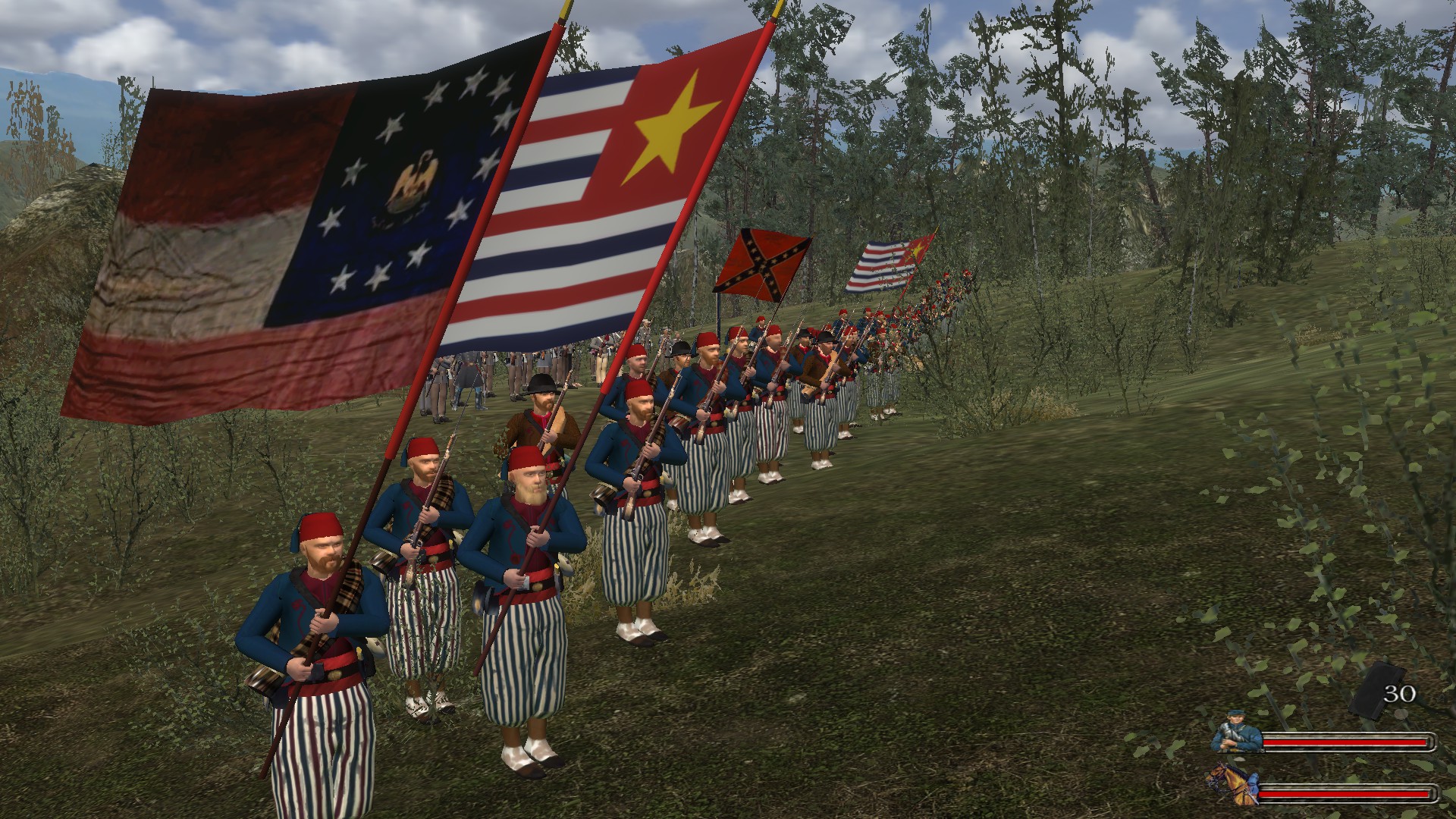
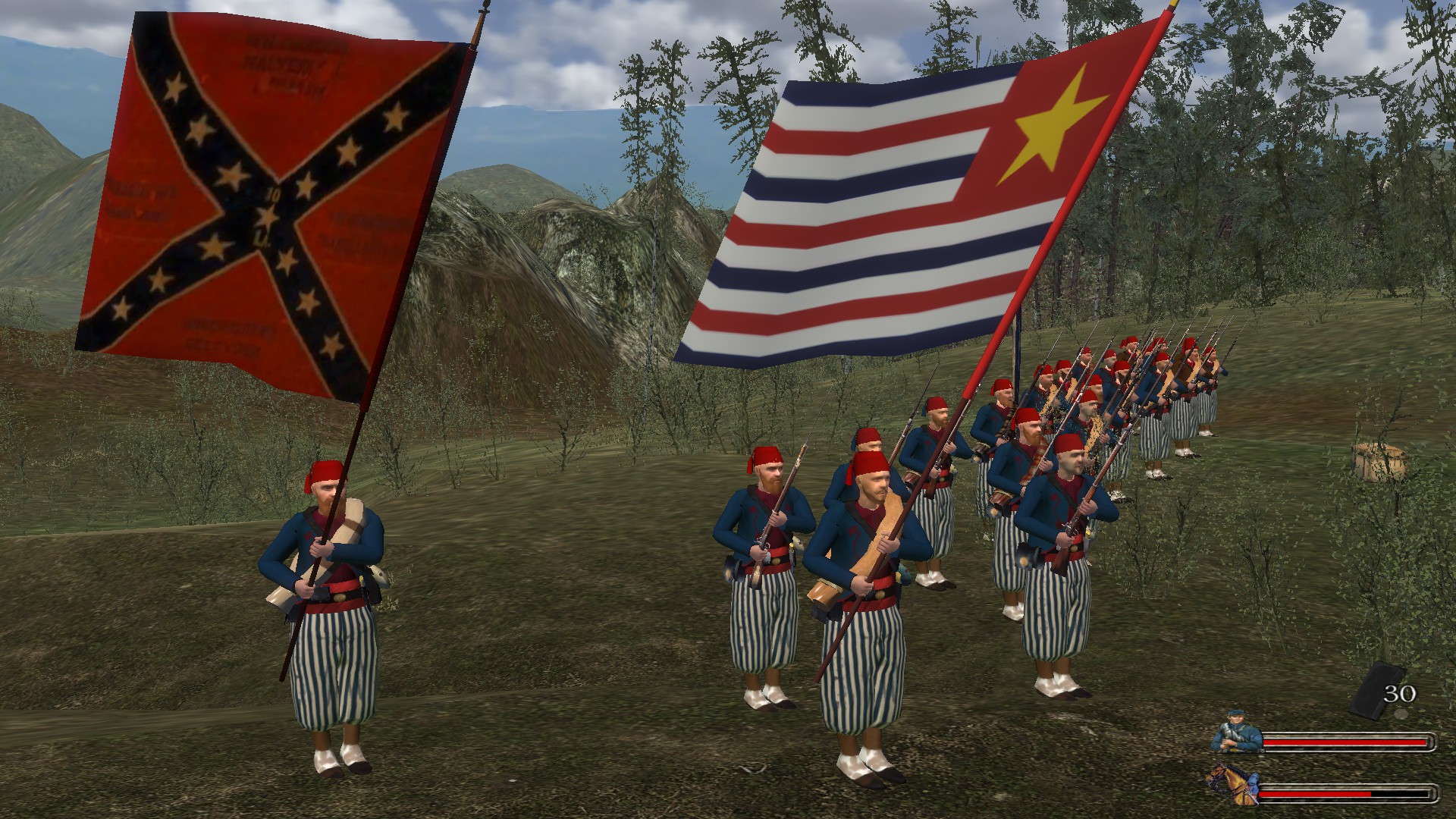
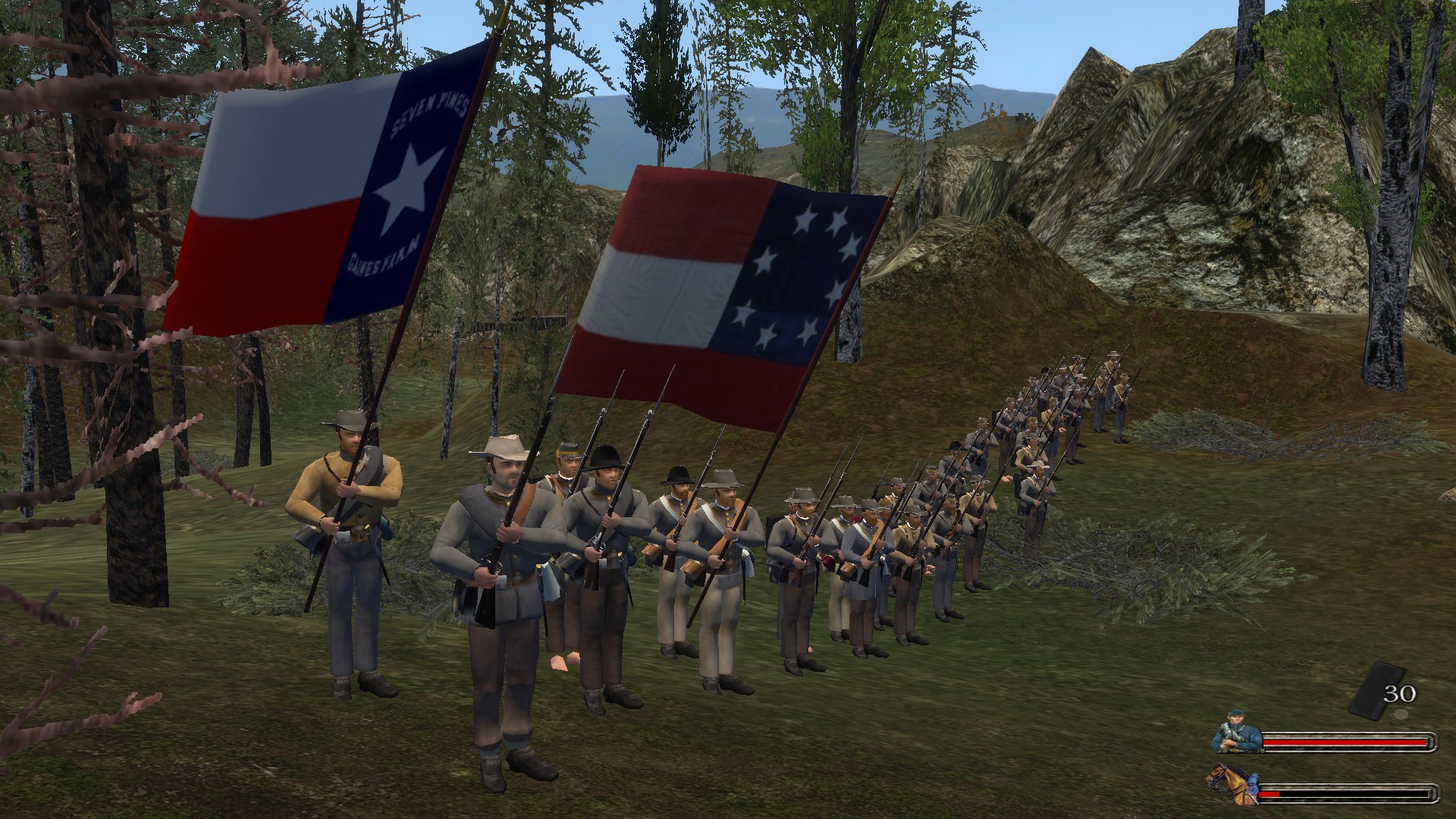
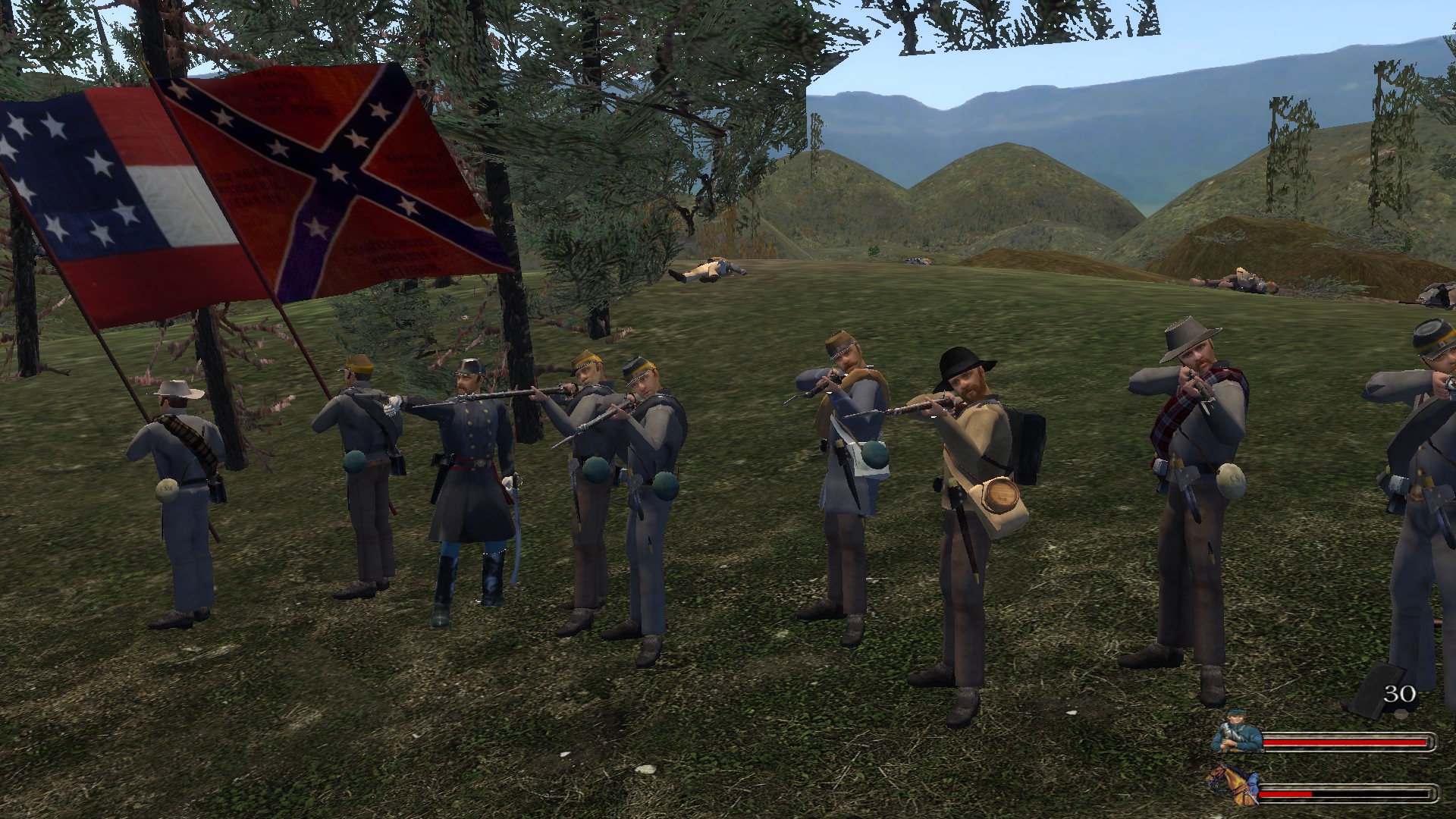

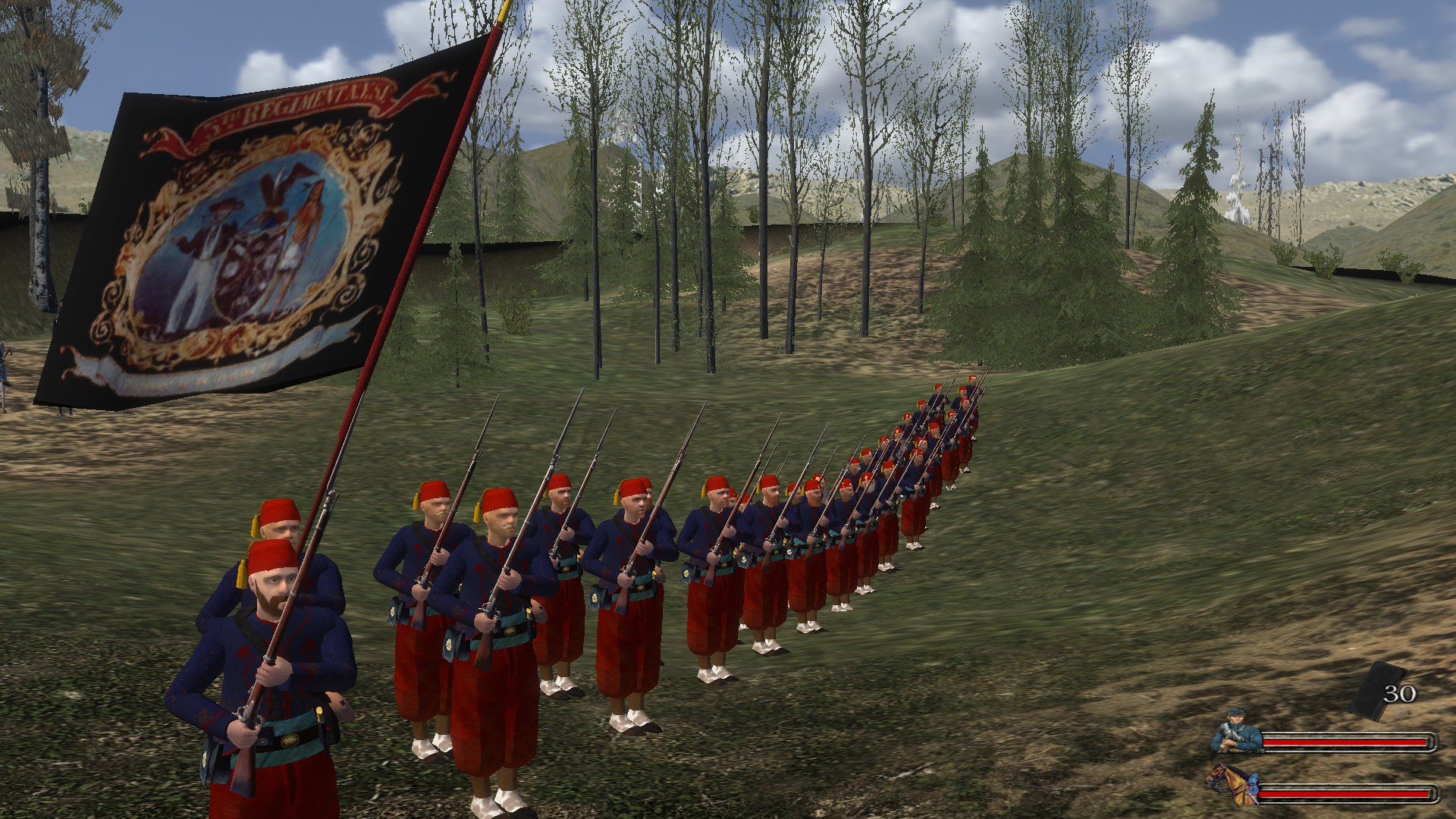
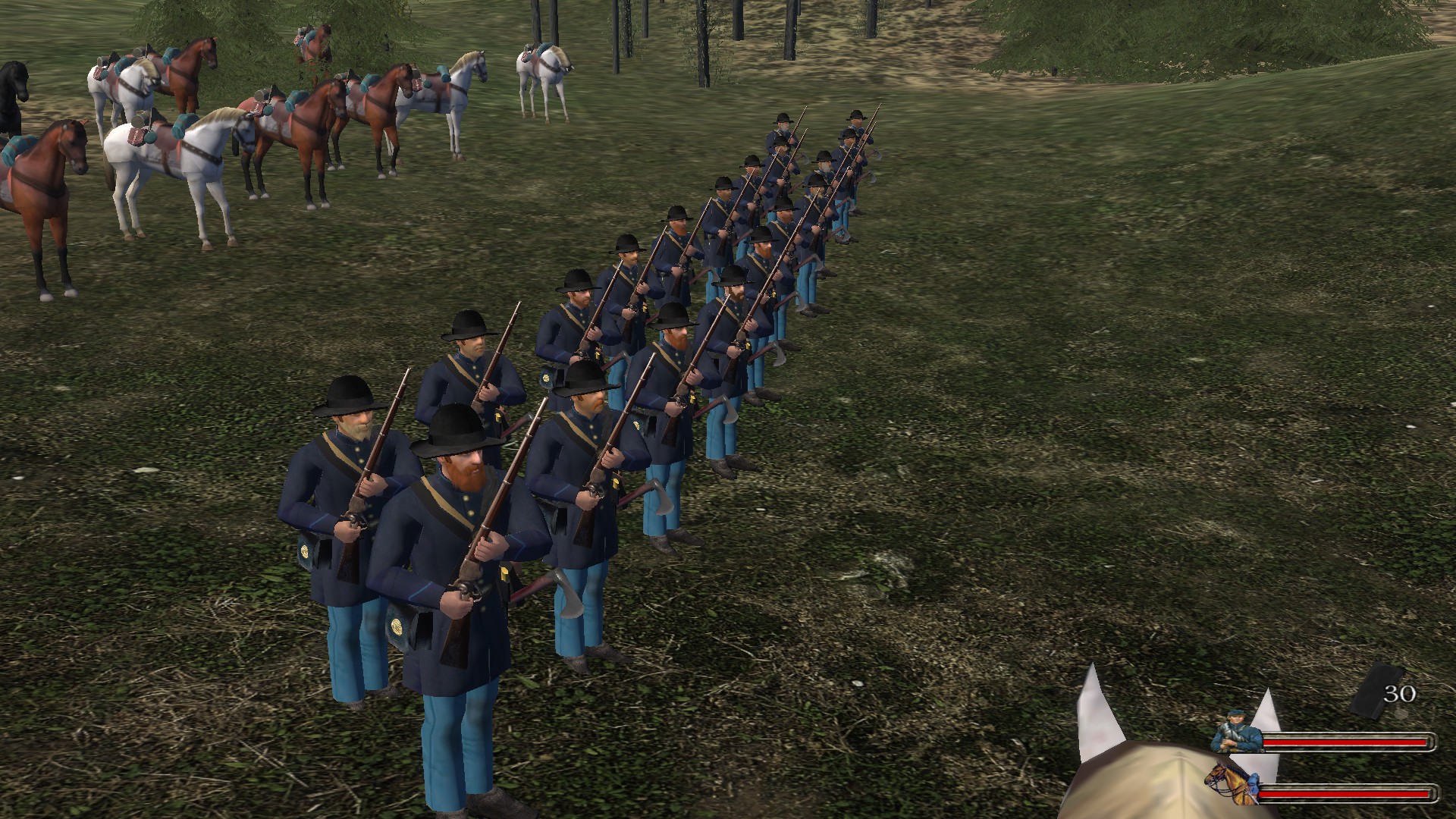
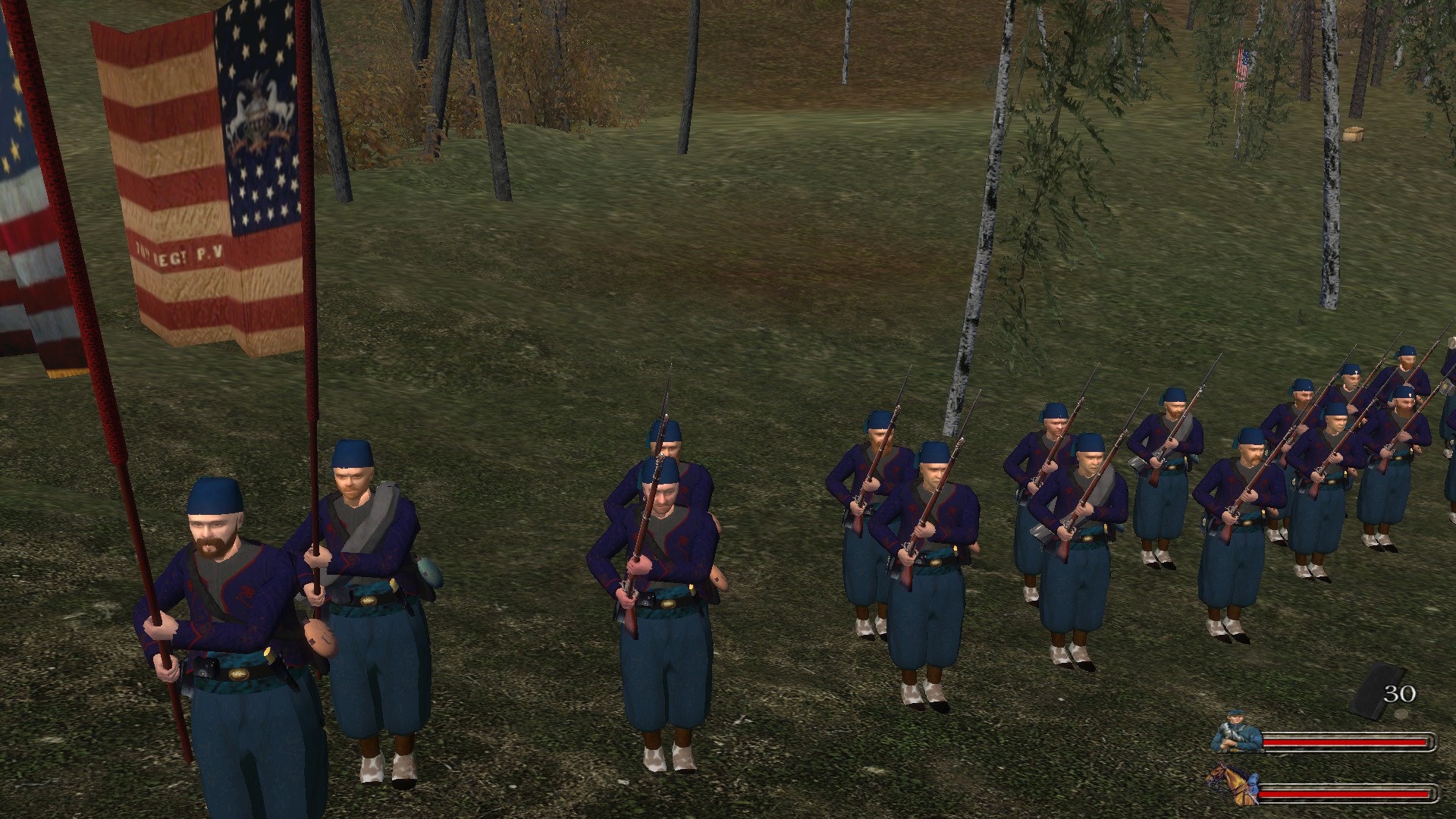
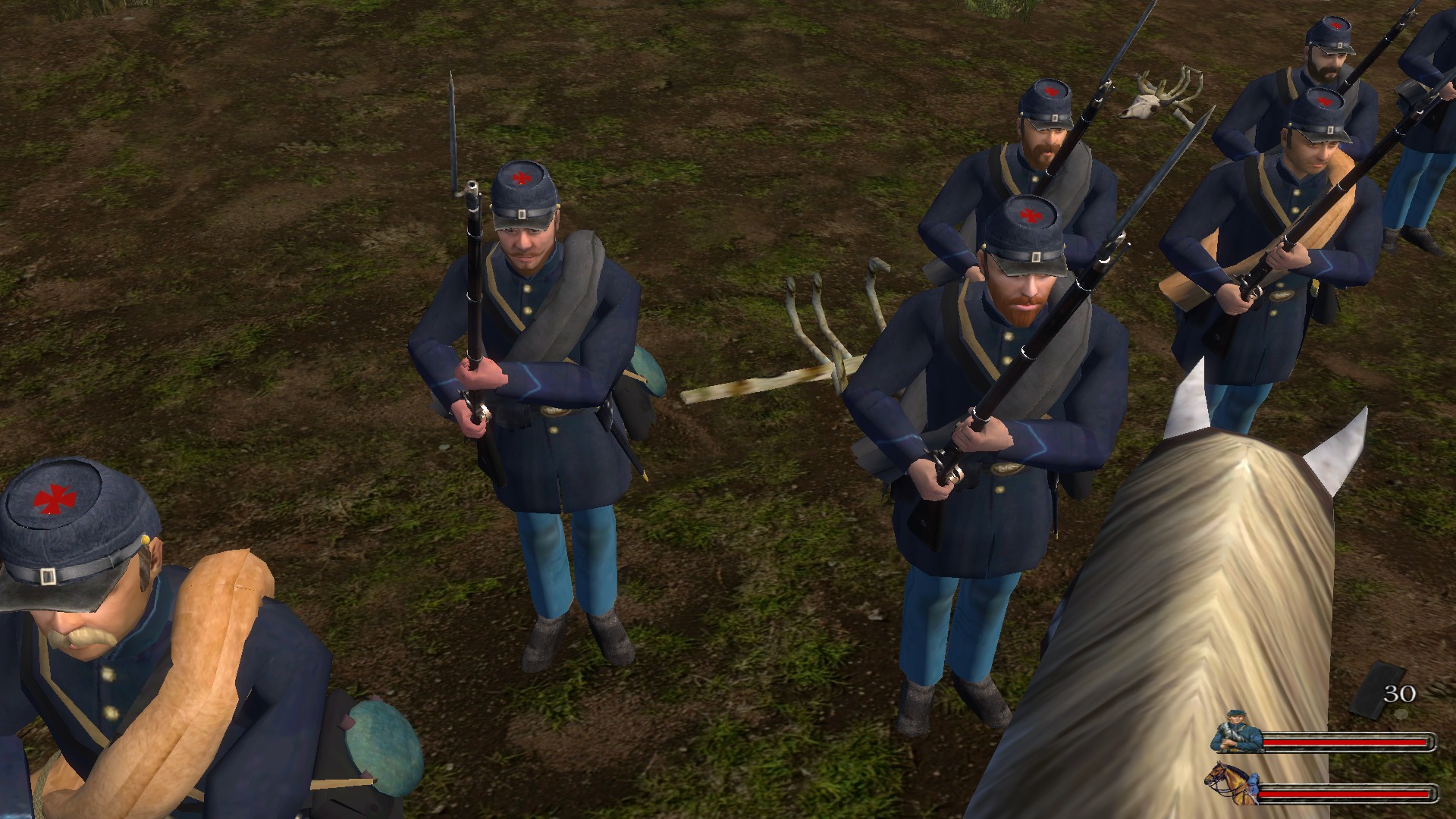
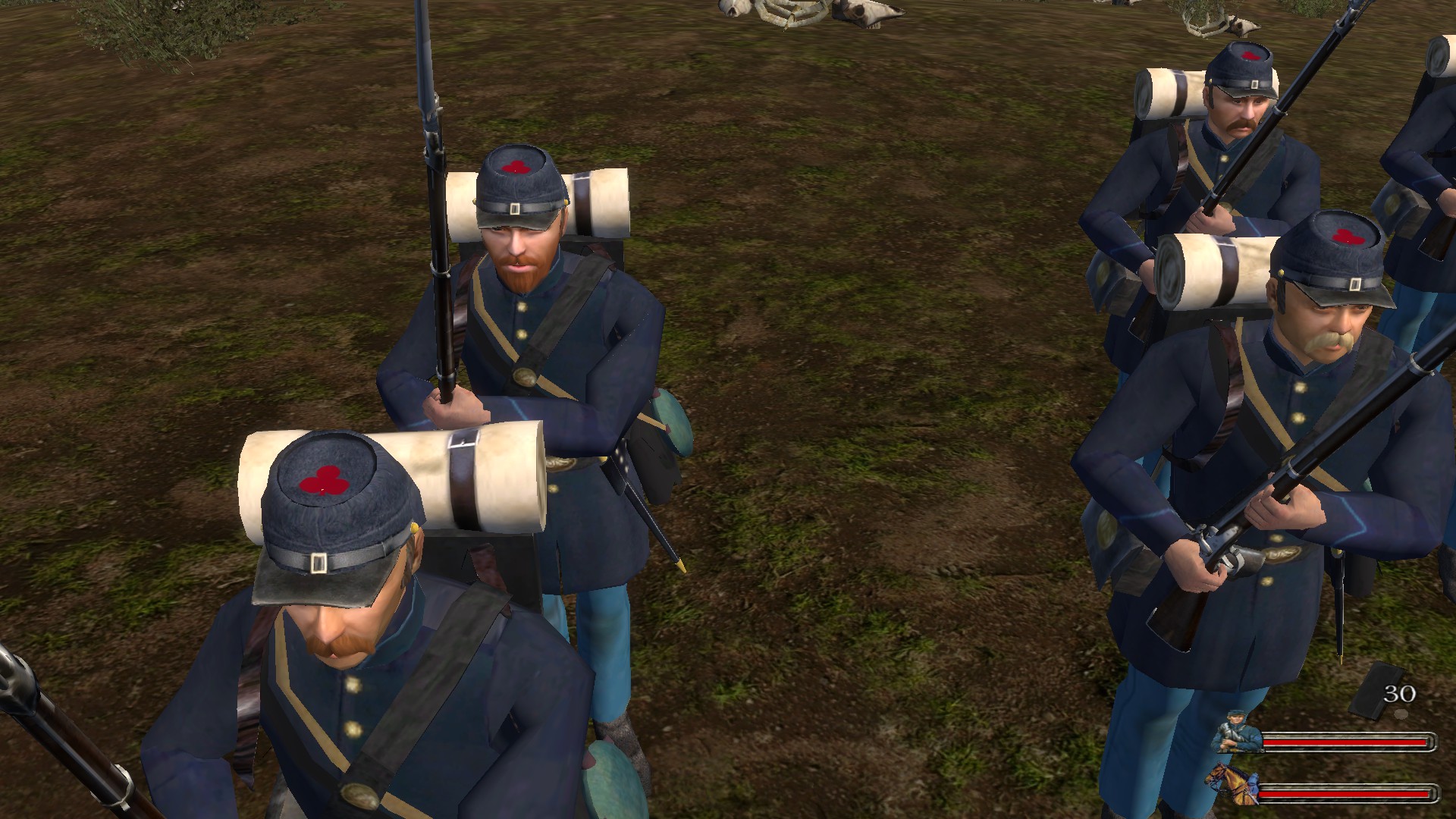
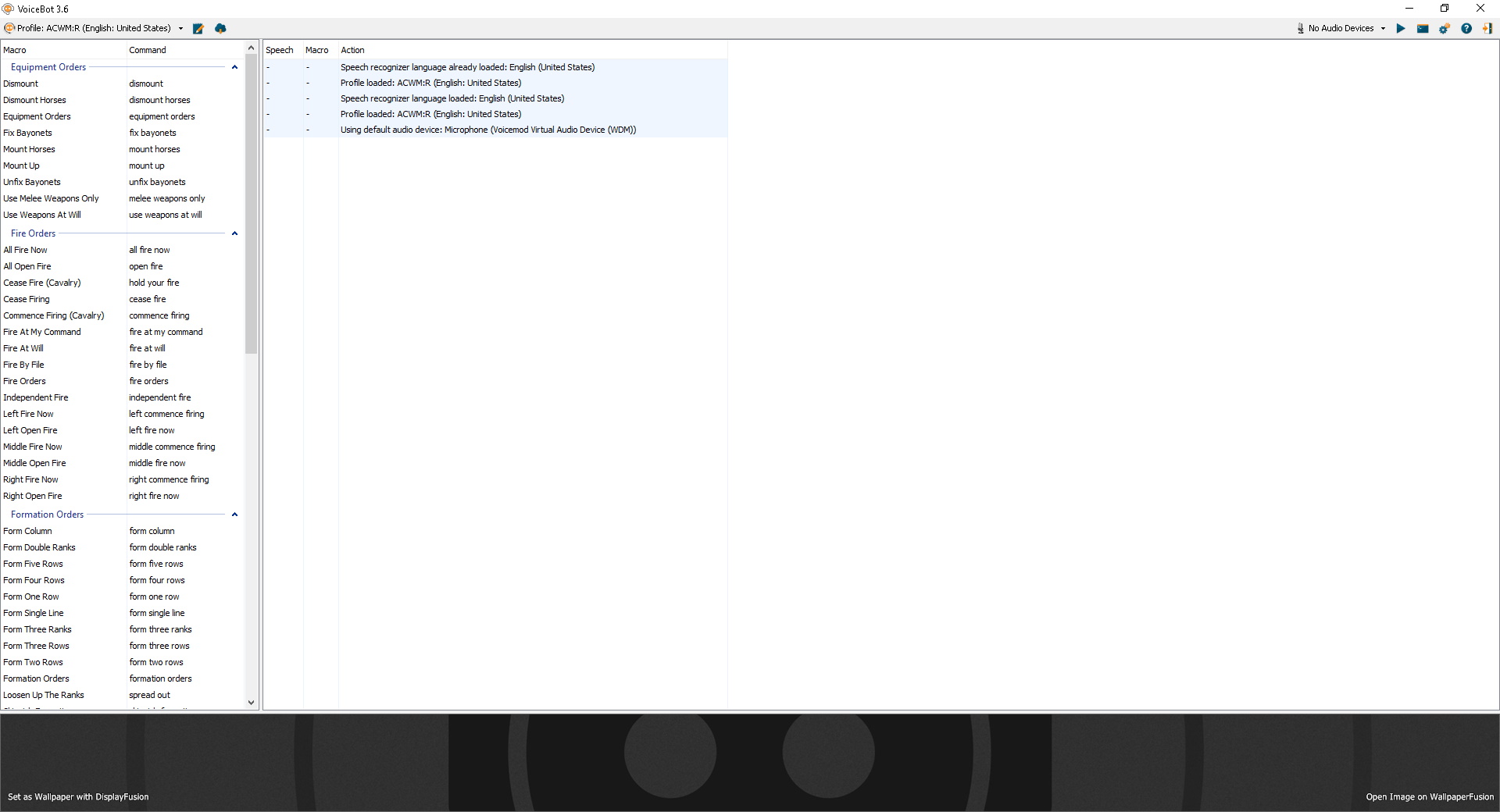


This is awesome :) tracking the mod and later im going to try it. Continue the good work
Thank you! Have fun with the mod, enjoy :D
Amazing. Are you able to join as a regular soldier and advance through the ranks?
Unfortunately you can't be a regular soldier in an AI general's army, but we're looking into getting that in the mod in a future release. Maybe not the next one, nothing is set in stone right now, but we're definitely looking into it and it is a real possibility that it will come at some point, that much I can say.
The game is always been closed while in the loading screen, "Unable to open file op_terrain_borders_textures.brf ;~;
Hello, did you follow the installation instructions? You need to apply the hotfix in order to resolve the errors with terrain borders. Please only use the hotfix installation method without expanded horizons, it seems to be giving a lot of people issues.
Hello, sorry if this sounds stupid, but how do i enable the buggle calls folder?
Hello, I'm a little late to reply to you, but I hope you still get the message.
There is no such thing as stupid questions. The bugle calls folder is meant to be used with the voicebot program. You can read the instructions for how to use that on this page, or you can also check out the article or download page for the latest version of the mod. I have included the instructions for using voicebot there as well.
Thanks for checking out the mod! :)
This comment is currently awaiting admin approval, join now to view.